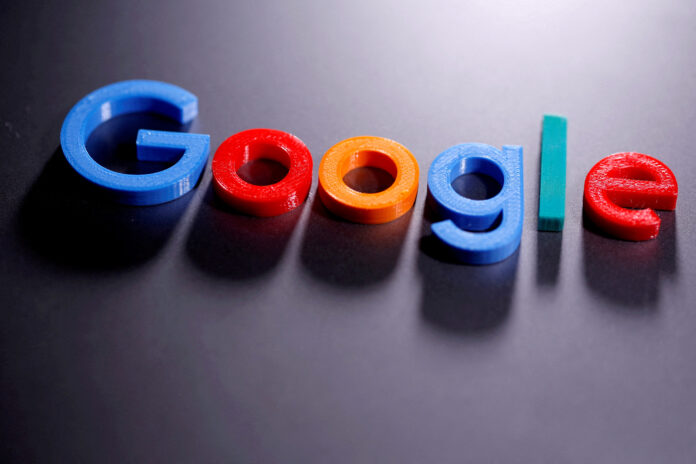Google is celebrating its 25th anniversary today, and during the past quarter-century, the company has created plenty of products we use every day. Sadly, it’s also killed an overwhelmingly long list of products and features I loved. You can usually see these terminations coming from a mile away, but occasionally, they come out of nowhere and leave us reeling. Here are 10 dead Google products I miss so
Google Now
Google Now: 2012-2016
I miss a few items on this list every day, and this is one of them. Long before Google Discover, Google Now existed as the page to the left of our home screens, and it was one of the most helpful software features I’ve ever used.
In 2011, rumors began to circulate that Google was working on a new voice search codenamed Majel, named after the late Majel Barrett, who was famously married to Gene Roddenberry and voiced the computer for the Enterprise D, Defiant, Voyager, and countless other starships in Star Trek. In 2012, it was released as a part of Google Now, and the voice commands were terrific for the time and would lay the basis for what we see in Google Assistant today.
Google Now’s genius wasn’t in the voice search, though. It was in the way it would know precisely what information you needed to see now, hence the name. If you used Google Maps to navigate somewhere, Now would save your parking location and pin it to the top of the feed. As the time for you to go to work would near, it would send a notification about traffic conditions and whether you needed to leave early that day. The feed on the home screen would show cards for all of these items, and it was far more helpful than the endless news feed we have today — though it probably earned Google significantly less money.
Inbox
Inbox by Gmail: 2015-2019
This one hurts. Inbox was an experiment by the Gmail team that tested new ways to interact with your email. Inbox would scan incoming emails and bundle and organize them into groups. Gmail does that, too, but this had more categories, and the way it presented them was better thought out. You could set timers and reminders for specific emails right from the app, pin important conversations to the top of the screen, and mark entire clusters of emails as read in chunks. The interface was also the same across mobile and desktop, making it easy to switch between your devices as you go about your day.
That’s just a taste of what Inbox could do, and Google promised it would bring everything over to Gmail. It’s been four years, and much of it is still missing.
Google+
Google+: 2011-2019
Talking about the death of Google+ is terrible for my blood pressure, but I’ll struggle through it today. Google+ was the company’s attempt at a social network, and for those who gave it a chance, it became our digital home. There are a few reasons for that.
One of the key differentiators of G+ was that it let you create collections on your profile. Every time you made a new post, you’d choose which collection it would go in. People who followed you could unfollow specific collections so you could manage exactly what would be in your feed. In my case, many people followed my thoughts on Android while ignoring my Transformers collection.
That’s just the tip of the iceberg for Google+, but we don’t have time to dig into the whole thing today, and doing so for this long is already making me smell burnt toast. All that’s left to say is that I still think about Google+ and the family I made there every day.
Google-made Chromebooks
Google-made Chromebooks: 2013-2019
Google released its first Chromebook, the Chromebook Pixel, in 2013, and it spawned a line of laptops that garnered a fervent fanbase. These machines were over-engineered and far more powerful than any ChromeOS device needed to be, but that’s why we loved them.
The best Chromebook Pixel was the LS (a nod to Spaceball’s famous “Ludicrous Speed” scene), which came out in 2015 for a whopping $1,200. The laptop looked fantastic and featured a lightbar on the lid that would glow the Google colors when the screen was on and display the battery level when it was closed. The final product in this line was an Android tablet called the Pixel C, which took this industrial design and brought it to a mobile device.
After the Chromebook Pixels, we had the Pixelbook, Pixelbook Go, and Pixel Slate. The Slate was an utter disappointment, compromised by trying to be both a laptop and tablet. The Pixelbook Go was well-liked, but it wasn’t special. No, the last truly special Google-made Chromebook was the Pixelbook from 2017, a device I still use every day. We found out last year that Google was done making its own Chromebooks, and almost a year later, I am still seething with rage.
Google Play Music
Google Play Music: 2011-2020
Google Play Music was Google’s first attempt at music streaming, and it became a popular service. Its standout feature was the ability to upload your existing music library. If you didn’t want to pay for a music subscription, you could rip your CDs, upload them to Play Music, and then stream them to any device for free. Google also let you purchase music iTunes style for a while, and songs purchased would be played through this app, too.
When the switch to YouTube Music came along, you could export your library over, but it wasn’t a smooth process for everyone. YouTube Music eventually got updated to include the library upload feature, but there are still missing features to this day, and the Play Music app was a lot more reliable in many ways.
Stadia
Stadia: 2019-2023
Oh, Stadia, you had so much potential. Google’s game streaming service was launched in 2019 and died in 2023. It allowed you to own a game library that was entirely cloud-based and stream the games to an Android device, TV, or computer over Wi-Fi. When it worked, it was fantastic, but performance was inconsistent for many users. This is another case of Google releasing something people and their home internet weren’t ready for yet. For a deep dive, check out our Stadia retrospective.
Google Play Edition smartphones
Play Edition: 2013-2015
In 2013, Google released a handful of devices under the Google Play Edition (GPE) moniker. These devices were popular OEM models that ran pure stock Android, like a Nexus, instead of the OEM skin they would usually have. You could get Google Play Editions of the Samsung Galaxy S4, HTC One M7 and M8, the original Moto G, Sony Z Ultra, and LG G Pad 8.3. A Samsung Galaxy S5 Play Edition made it far enough into development that press images for it leaked, but it was never released.
The Play Editions gave a lot of people exactly what they wanted: OEM hardware with Google software. I wanted one myself at the time, but sadly, these devices were never sold in the UK.
Google Glass
Glass: 2013-2015
Google has a persistent problem of being too far ahead of the curve. Time and again, it will release products deemed useless or, in this case, controversial, only for other companies to gain popularity with the same idea years later.
Google Glass is a prime example of this. These $1,500 glasses put a small display in the corner of your vision that could do everything our smartwatches have grown to do, from Google Maps navigation and media controls to notification management. The issue Google had at the time was public perception surrounding the camera.
People hated the idea that someone could have a camera pointed at them at all times, and there was enough outcry to bury any chance Glass had to become mainstream. Ten years later, we’ve lived through the hype explosion surrounding Snapchat’s glasses, and people are eagerly awaiting Apple’s smart headset (that are admittedly made for home usage much more than outdoor usage). People are used to always being on camera now, whether that’s a good thing or not, and if Glass were to be announced now, I argue it would have found success.
While the consumer prototype version aimed at developers was discontinued in 2015, Google Glass lived on as an enterprise device until earlier this year.
Google Daydream
Google Daydream: 2016-2019
Google launched Google Daydream in 2016 alongside the first Pixel phone, and it was a premium advancement on what the company had already been doing with Cardboard. The Daydream was a VR headset that was powered by your phone, and I quite liked it. Obviously, it would never perform as well as a dedicated VR headset like the Valve Index, but for looking at your photospheres or watching a YouTube video on a massive virtual screen, it was more than good enough.
Alas, it wasn’t successful enough to keep going, even after the improved second-gen version came out a while later. The irony for me is that not long after it was discontinued, Android phones adopted high refresh rate displays, which would have drastically improved the Daydream experience.
It’s also another case of Google introducing something ahead of its time, as mobile VR headsets like the Gear VR have found their niche.
Allo
Google Allo: 2016-2019
Allo was a self-fulfilling prophecy. Google had many messaging apps over the years, each unceremoniously killed. Allo was supposed to replace Hangouts, which ironically outlived Allo by three years.
Google’s history of killing messaging apps led to many people refusing to give Allo a chance, especially Hangouts users who were told their service would be shut down because of Allo. The sad thing is, Allo was pretty great. It had some annoyances, like being tied to a phone number and only working on one device at a time, but they could have been ironed out if it had stayed around.
The standout feature for Allo was integration with Google Assistant. The only way to use Assistant before the launch of the original Pixel was in a chat in Allo. That integration was genuinely helpful, especially when planning with someone. Having the Assistant chime in with information about where you were planning to go and putting the plan in both of your calendars was great. For a look back, check out our brief history of Allo.
Too many Google products have died in the past 25 years
This is just a small selection of dead Google products. There are 288 of them listed on Killed By Google, and while I was writing this article, Google announced it was killing its Podcasts app. There are plenty of others I could have mentioned, like Hangouts and Google Reader. The decision to kill many of these things was understandable, but some were downright unusual, and either way, we miss every item mentioned here today. I would tell you to enjoy Google’s 25th celebrations, but it’ll probably kill the plans for its party before it even starts.
ANDROID POLICE















